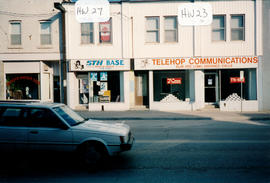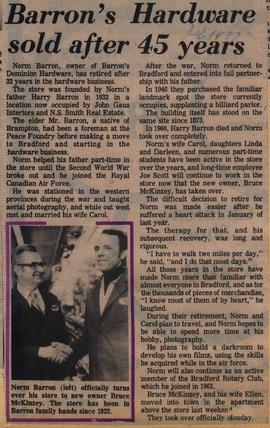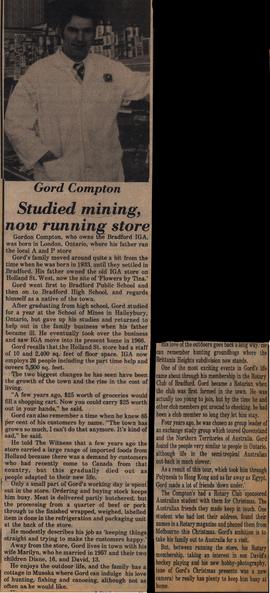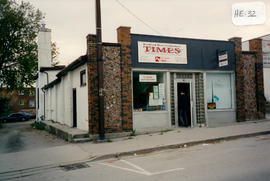The Queen’s Hotel (located at 22 Holland St. West) was built circa 1850. This photo (taken in the fall of 1995) shows the structure just before a major renovation. The hotel went “dry” during WWI. Bradford, like all of Ontario, was experiencing prohibition (even though Bradford had voted “wet”). The building originally had two storeys. A third floor and a flat roof were added later. It was heated with an old steam engine that had the undercarriage removed. The engine first burnt 4’ stacks of hardwood, then coal, and finally, oil. Eventually a new furnace was installed (most likely natural gas). The building was always warm and thought of as a home away from home.
Harry Lang, Celina and their children (Evelyn, George and Audrey) moved here from North Bay and bought the building in the 1920’s. They ran the Temperance House, and a board and dining service at this location. They had long-time help and boarders. Little John Cook ran a shop selling ice cream, chocolate bars, and smokes on the east side (down one step). A bus stop was added when bus service started. Len and Art Saint put a cement addition on the back of the building around 1938. At the rear, there was a chicken house, a roofed, open shed, and a laneway. Another shed ran south, and to the west was an ice house. There was open space to the north before the laneway and a barn for hay and horses. The barn had two stories and below there was a pig sty. North of the laneway there was another open shed, car storage, and a cooking kitchen on the back of the hotel (a little east of the back entrance). Jack Wilson worked for Harry Lang for many years. Mitch Hepburn brought in beer in 1934 and the building opened as the Queen’s Hotel. Businessmen had to chip in to buy a liquor license and Hepburn was the first supplier. Business was excellent and the hotel was really crowded. Before the arrival of the beer, the locals had used it as a place to play dominoes and checkers, and to conduct hunt camp and other organizations’ meetings. (1, 2, 4)
Please contact the Bradford West Gwillimbury Public Library (905-775-3328) if you have any other information about this photo.










